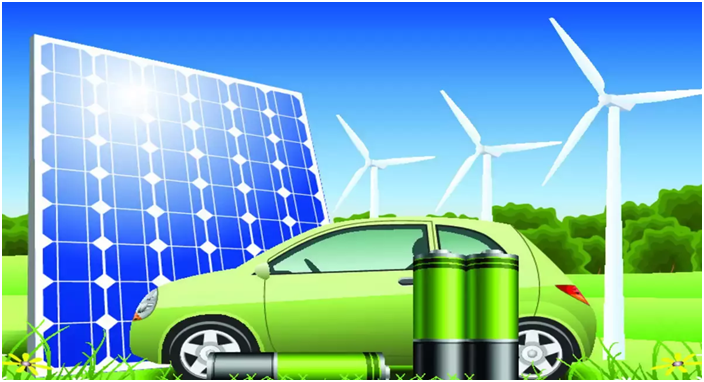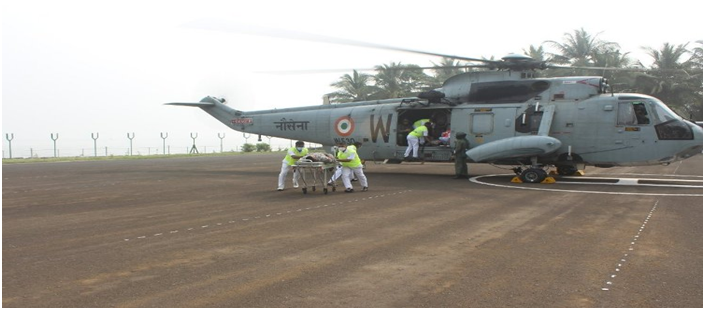Indian Army to reduce carbon emissions, will procure EVs for select units (GS Paper 3, Environment)

Why in news?
- The Indian Army has decided to procure electric vehicles (EV) for select units and formations in sync with the government’s overall policy of reducing the carbon emissions.
Details:
- As per the plan, around 25 per cent light vehicles, 38 per cent buses and 48 per cent motorcycles in select units will be replaced with EVs in a time-bound manner.
- Various factors unique to the Indian Army’s employability, remote locations of employment and operational commitments were considered before finalising the roadmap for induction of EVs.
EV charging stations:
- In order to support a viable EV ecosystem within Indian Army units, necessary support infrastructure, including charging points for EVs, will be put in place.
- These EV charging stations will have at least one fast charger and two to three slow chargers. Electric circuit cables, transformers with adequate load bearing capability based on anticipated number of EVs per station will be put into place.
Way Forward:
- Considering the pace of greener initiatives being adopted by the government, efforts to reduce the dependency on fossil fuels, it is necessary to adapt to the changing environment.
- The Indian Army is also planning setting up of solar panel-driven charging stations, which are also planned in a phased manner.
Exercise Prasthan
(GS Paper 3, Defence)
Why in news?
- Recently, an offshore security exercise, ‘Prasthan’ was conducted in the Krishna Godavari Basin Offshore Development Area (ODA) under the aegis of Headquarters, Eastern Naval Command.
Aim:
- Conducted every six months, this exercise is an important element of ensuring offshore security and aims to integrate the efforts of all maritime stakeholders involved in offshore defence.

Key Highlights:
- Led by the Navy, the exercise saw participation from the various oil operators, like ONGC, RIL, Vedanta, and other stakeholders in the domain of maritime security including AP Marine Police, AP fisheries department and the Coast Guard.
- The two-day exercise resulted in refining standard operating procedures (SOPs) and response actions to several contingencies in the Offshore Defence Area off Kakinada.
- Contingencies such as terrorist intrusion, bomb explosion, casualty evacuation, search and rescue, man overboard, major fire, oil spill and mass evacuation were exercised.
Way Forward:
- The exercise provided all stakeholders with a realistic opportunity to assess their readiness to respond and combat contingencies in the Eastern ODA, as also to operate together in a coordinated and synergised manner.
Living Planet Report 2022: Wildlife populations decline by 69% in 50 years
(GS Paper 3, Environment)
Why in news?
- There has been a 69 per cent decline in the wildlife populations of mammals, birds, amphibians, reptiles and fish, across the globe in the last 50 years, according to the latest ‘Living Planet Report’ by World Wide Fund for Nature (WWF).
- The Living Planet Index (LPI) featured about 32,000 populations of 5,230 species across the world.
Key Highlights:
- The highest decline (94 per cent) was in the Latin America and the Caribbean region.
- Africa recorded a 66 per cent fall in its wildlife populations from 1970-2018 and the Asia Pacific 55 per cent.
- Freshwater species populations globally reduced by 83 per cent, confirming that the planet is experiencing a biodiversity and climate crisis. Habitat loss and barriers to migration routes were responsible for about half of the threats to monitored migratory fish species.
- The vertebrate wildlife populations are plummeting at a particularly staggering rate in tropical regions of the world.
Threats to biodiversity:
- Biodiversity loss and climate crisis should be dealt with as one instead of two different issues as they are intertwined.
- WWF identified six key threats to biodiversity; agriculture, hunting, logging, pollution, invasive species and climate change to highlight ‘threat hotspots' for terrestrial vertebrates.

Mangroves:
- Mangroves continue to be lost to aquaculture, agriculture and coastal development at a rate of 0.13 per cent per year.
- Many mangroves are also degraded by overexploitation and pollution, alongside natural stressors such as storms and coastal erosion.
- Mangrove-loss represents loss of habitat for biodiversity and the loss of ecosystem services for coastal communities. In some locations, it can mean the loss of the very land where coastal communities live.
- Around 137 square kilometres of the Sundarbans mangrove forest in India and Bangladesh has been eroded since 1985, reducing land and ecosystem services for many of the 10 million people who live there.
Way Forward:
- Climate change in India will impact key areas, such as water resources, agriculture, natural ecosystems, health and the food chain.
- There is need for an all-inclusive collective approach that can put us on a more sustainable path and ensures that the costs and benefits from our actions are socially just and equitably shared.
RoboCap could replace insulin shots
(GS Paper 2, Health)
Why in news?
- Recently, researchers at the Massachusetts Institute of Technology (MIT) have developed a robotic pill.
- Itcould be used to orally administer large protein drugs such as insulin that consist of proteins or nucleic acids and are at the moment only injectable.
- RoboCap developed by MIT, has a robotic cap that tunnels through the mucus barrier after reaching the small intestine and allows the drugs to pass into cells lining the intestine.

Why it matters?
- Drug delivery has been one of the toughest breakthroughs in medical science, and there remain several barriers, which include surviving acidic regions in the stomach, digestive enzymes, and above all, the mucus barrier that lines the digestive tract.
How RoboCap works?
- Researchers have demonstrated that the unique pills could be used to deliver insulin as well as vancomycin, an antibiotic peptide that currently has to be injected.
- They designed the protective capsule to overcome the challenges faced inside the body by spinning and tunneling its way through.
- About the size of a multivitamin, the pill contains the drug in a small reservoir at one end and the spinning feature at the other. The capsule is coated with gelatin that can be tuned to dissolve at a specific pH.
- As the capsule dissolves, researchers said that the change in pH triggers a tiny motor inside the RoboCap capsule, which is coated with small studs to brush the mucus away, starts spinning. The spinning motion also helps to erode the compartment that carries the drug, which is gradually released into the digestive tract.
Outcome:
- They have tested the robotic pill on animals to deliver either insulin or vancomycin and found that they could deliver 20 to 40 times more drug than a similar capsule without the tunneling mechanism.
- Once the drug is released, the capsule passes through the digestive tract on its own, with no side effects noted so far.
Way Forward:
The researchers are hopeful that it could also be used to target the stomach or colon by changing the pH at which the gelatin coating dissolves.





